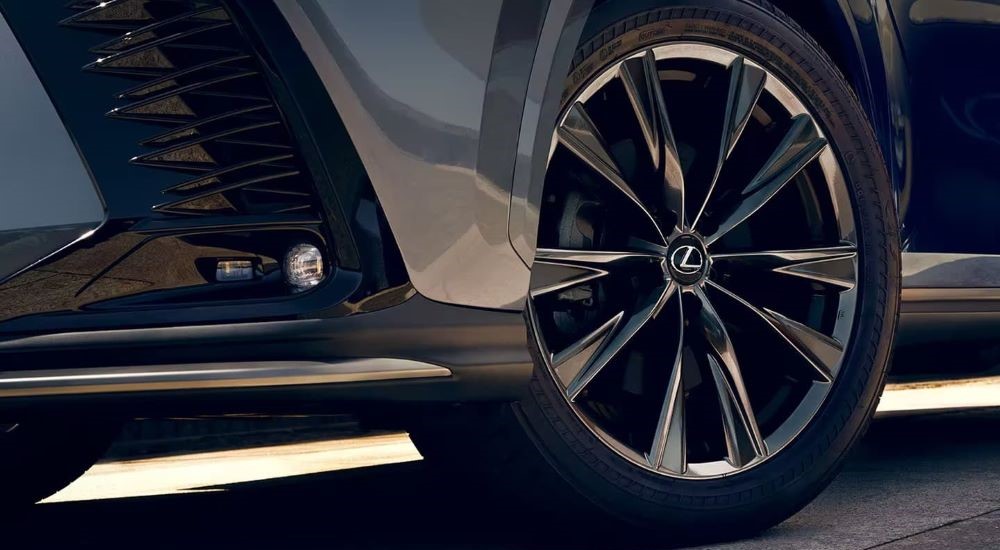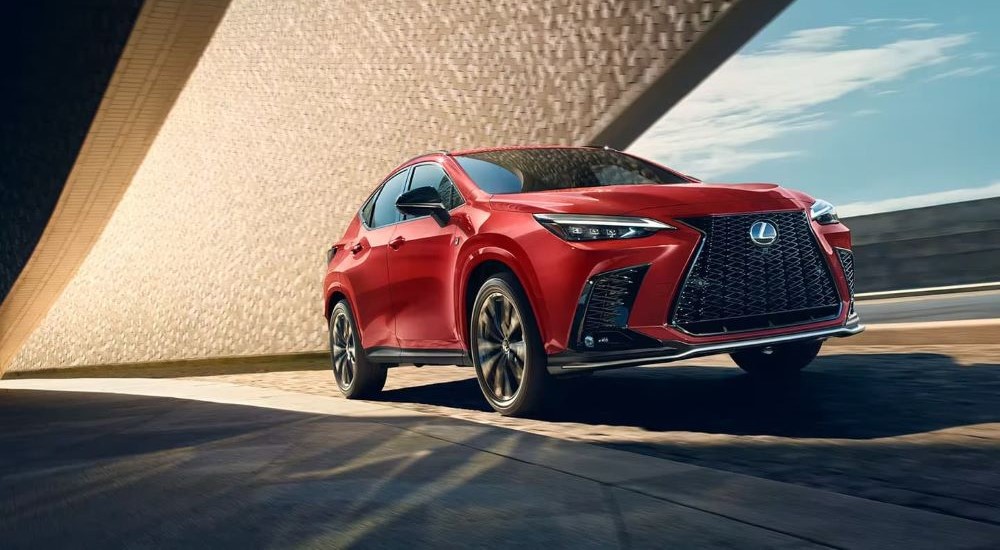The engine is the very heart of any vehicle. You can swap out designs, seating, cargo area, and loads of other features and still have a car that gets the job done. But the choice of engine makes all the difference in your vehicle’s core purpose, transportation. Engines affect everything from your vehicle’s acceleration to fuel economy and overall driving experience. Lexus has a long list of different engine options to choose from across its lineup, and many of them are on display in the 2024 Lexus NX.
Every new Lexus NX for sale comes with one of four different engines. This can make it challenging to understand the different capabilities of the various options and successfully compare and contrast them when looking at trim levels and packages. To help you gain a better understanding of the Lexus engine options, we’ve broken down some of the differences below. We’ll take a look at the pros and cons of each and how they compare and contrast with one another.
NX 250: Naturally Aspirated 2.5L Engine
The naturally aspirated engine was the first type of gasoline engine for vehicles. The modern four-stroke internal combustion cycle was invented by a man named Nicolaus Otto all the way back in 1876. We still use this type of engine to this day. It works by drawing air into its combustion chambers at atmospheric pressure without mechanical assistance. After fuel is added and the air is compressed, a series of controlled explosions drive the pistons and power your vehicle’s wheels.
The naturally aspirated engine is less complex than other forms and often constitutes the base-level engine option. This is true on the 2024 Lexus NX, which comes standard with a naturally aspirated 2.5L four-cylinder engine. This engine, as its name indicates, has an internal volume of 2.5 liters, which is fairly standard for the segment.
It’s by no means a low-performing engine despite being the base-level option. Because it’s less complex than other engines, however, it has a lower price point and fewer components that can malfunction over the course of its life. This can mean lower long-term maintenance costs and potentially less downtime. Another cost-saving aspect of this engine is the higher fuel efficiency ratings it offers compared to more powerful options.
The tradeoff for cost and efficiency ratings is that these engines produce less power than higher-grade engines. On the Lexus NX, you get a total of 203 hp from the 2.5L I-4 engine. This is plenty of power for most everyday driving, including commuting and running around town. If your budget is more important than additional power, you can save money in both the short and long term by getting a vehicle with a standard naturally aspirated engine.

NX 350: Turbocharged 2.4L Engine
Fast forward to 1905, and a new turbocharged version of the existing combustion engine was patented by Alfred Büchi, a Swiss engineer. This inventor had set out to find a way to improve on the naturally aspirated engine. His efforts centered on finding a way to force more air into the engine to use more fuel faster. Luckily for us, more than a century later, he succeeded. These days, turbocharged engines do exactly what Büchi envisioned: they use a spinning compressor to forcibly move more air and, therefore, use more fuel to produce more power.
The next level up in terms of engines on the Lexus NX is a 2.4L turbocharged I-4. This engine uses a turbocharger to increase its ability to produce power. It uses more fuel to get this done, reducing fuel efficiency but increasing the maximum horsepower the Lexus NX offers. This is either a pro or a con, depending on who you talk to. If you want more power, get a turbocharged engine like this one. If you want to be more fuel-efficient, stick with the naturally aspirated variety. Adding a turbocharger will make your ride more capable, something we think gives it that extra cool factor.
NX 350h: Hybrid Electric Vehicle (HEV)
It might surprise you, but the concept of hybrid gas-electric vehicles has been around for over a century. It makes intuitive sense, after all. Originally, the concept had engines using fuel to create electricity, which powered the vehicle. Modern HEVs are much more efficient and marketable than the original concept. These days, HEV options like the Lexus NX operate by using electricity generated through regenerative braking as well as traditional combustion. Regenerative braking charges a battery, which can then be used to power the vehicle. There is no way to plug in an HEV, as gasoline is still the primary fuel.
Hybrid vehicles have taken off in recent years. Drivers across the country like the fuel savings they get by generating some of their power simply by driving. This is great for the environment as well as for peoples’ wallets when they hit the pump. There used to be debate about whether hybrid powertrains could produce the same level of power as traditional combustion engines, but at this point, it’s clear they can. The 2.5L four-cylinder with electric assist in the Lexus NX makes 240 hp while blowing past the 2.5L I-4 and 2.4L turbo in fuel economy ratings. Of course, HEV powertrains are more expensive. This is the biggest tradeoff, considering HEV options typically have high performance and efficiency ratings.
NX 450h+: Plug-in Hybrid Electric Vehicle (PHEV)
No matter where you go these days, it seems like there are electric charging stations in every major parking lot and gas station. While still not the majority, plug-in electric vehicles are gaining in popularity. While battery electric vehicles (BEV) have no internal combustion engine to power them and rely solely on electricity, PHEVs still have gasoline engines, similar to the HEV models. The difference is that they have a larger battery capacity and do not need to run the gasoline engine to charge it, allowing you to drive on electricity alone for shorter distances.
The Lexus NX has a PHEV option. The gasoline side is the same 2.5L I-4 as the HEV version, but the electric side uses a much larger 18.1 kWh battery pack and more powerful electric motors. This means that it can power itself with either gasoline or the electricity gained from being plugged in. The benefit of this is increased flexibility to switch between fuel types. It also gives the 2024 Lexus NX an estimated 37 miles of electric range––enough for most commutes. Charging your PHEV takes longer than filling up at the pump, so depending on how much time you have, you may opt to use gasoline or electricity to fit your needs.
The Array of Lexus Engine Options
Lexus doesn’t mess around when it comes to powertrain options. The brand gives its drivers plenty of choices to find the exact engine to match their perfect luxury vehicle. After all, if you’re choosing a top-of-the-line luxury brand, you deserve the best engine options. No matter if you’re interested in a naturally aspirated powertrain, a turbocharged engine, a hybrid, or even a plug-in hybrid, you’re going to be spoiled for choice. The four available options for the 2024 Lexus NX are designed to give drivers their ideal blend of capability and fuel efficiency. With so many customization options, any Lexus NX for sale will be sure to find the right buyer.





